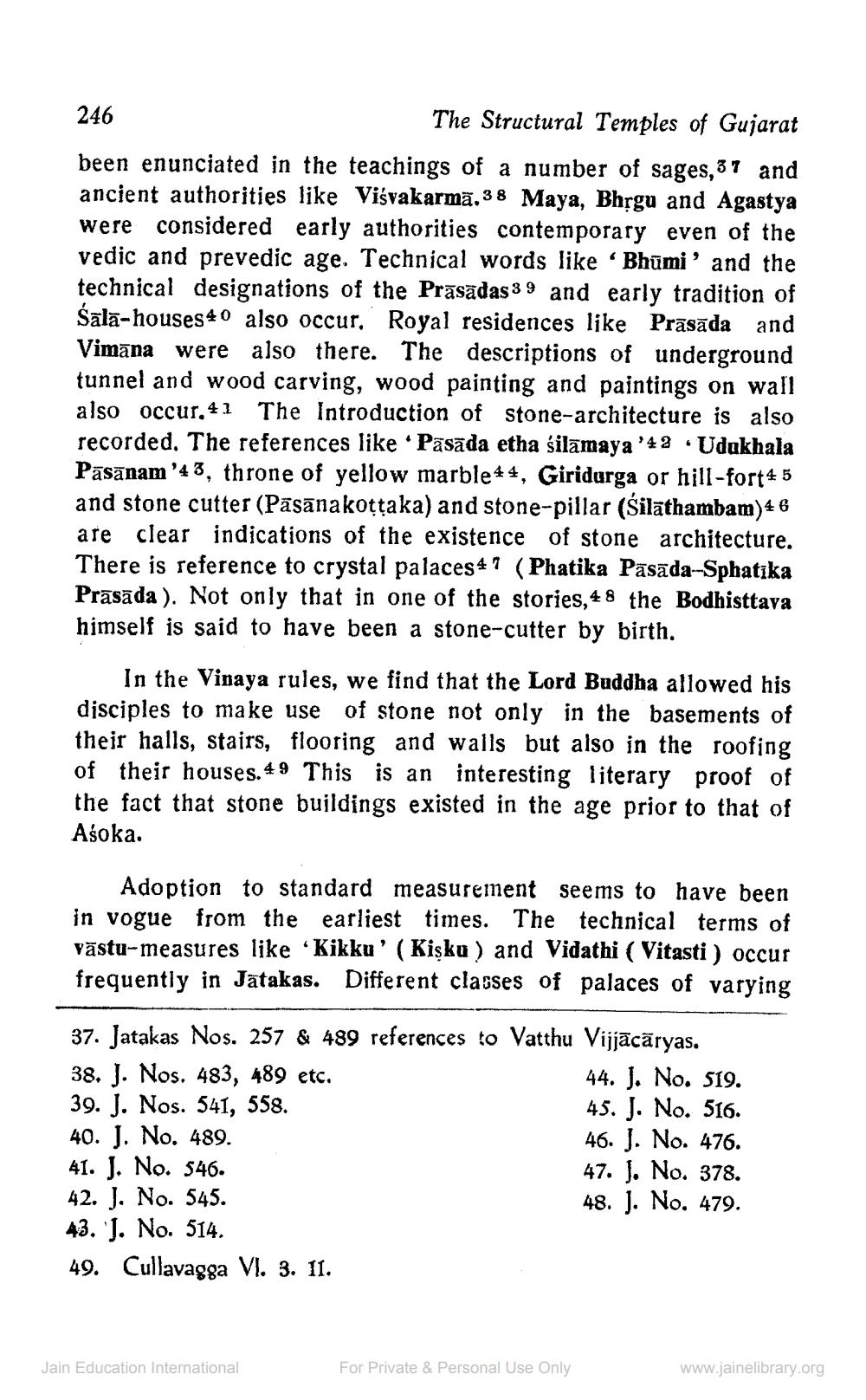________________
246
The Structural Temples of Gujarat been enunciated in the teachings of a number of sages, 37 and ancient authorities like Viśvakarmā.38 Maya, Bhțgu and Agastya were considered early authorities contemporary even of the vedic and prevedic age. Technical words like 'Bhūmi' and the technical designations of the Prāsādas 3 9 and early tradition of Sālā-houses 40 also occur. Royal residences like Prāsāda and Vimāna were also there. The descriptions of underground tunnel and wood carving, wood painting and paintings on wall also occur. 41 The Introduction of stone-architecture is also recorded. The references like . Pasāda etha śilāmaya'42 · Udukhala Pāsānam'43, throne of yellow marble 44, Giridarga or hill-fort 4 5 and stone cutter (Pasānakottaka) and stone-pillar (Šilāthambam)4 6 are clear indications of the existence of stone architecture. There is reference to crystal palaces47 (Phatika Pāsāda-Sphatīka Prāsāda ). Not only that in one of the stories, 48 the Bodhisttava himself is said to have been a stone-cutter by birth.
In the Vinaya rules, we find that the Lord Buddha allowed his disciples to make use of stone not only in the basements of their halls, stairs, flooring and walls but also in the roofing of their houses. 49 This is an interesting literary proof of the fact that stone buildings existed in the age prior to that of Asoka.
Adoption to standard measurement seems to have been in vogue from the earliest times. The technical terms of vāstu-measures like “Kikku' ( Kisku ) and Vidathi ( Vitasti) occur frequently in Jātakas. Different classes of palaces of varying
37. Jatakas Nos. 257 & 489 references to Vatthu Vijjācāryas. 38. J. Nos. 483, 489 etc
44. J. No. 519. 39. J. Nos. 541, 558.
45. J. No. 516. 40. J. No. 489.
46. J. No. 476. 41. J. No. 546.
47. l. No. 378. 42. J. No. 545.
48. J. No. 479. 43. J. No. 514. 49. Cullavagga VI. 3. 11.
Jain Education International
For Private & Personal Use Only
www.jainelibrary.org




